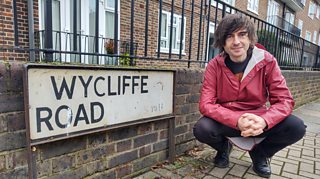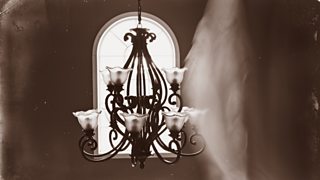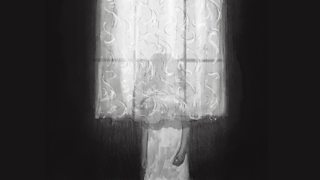The Story of The Battersea Poltergeist
Danny Robins, the presenter of Radio 4's The Battersea Poltergeist tells the story behind the haunting of 63 Wycliffe Road, London.
I’m walking down a quiet street in Battersea, South London, searching for the site of a very ordinary house that was the scene of what I believe is Britain’s strangest ever haunting; a poltergeist case that spanned an incredible 12-year period and, at its height, became a major national news story, with newspaper headlines about strange noises, flying objects, exorcisms and ghostly communication.
Do you believe in ghosts?
An attempt was made to contact the poltergeist on live prime-time TV on the ����ý and it was even discussed by the Home Secretary in the House of Commons.
The ‘haunted’ house looks like ours, the people affected are not dissimilar to us.
What is it about ordinary houses on quiet streets, I wonder, as I scan the door numbers, looking for Number 63 Wycliffe Road. Some of the strangest and most unsettling alleged poltergeist cases have taken place in anonymous semi-detached houses on seemingly tranquil roads. Perhaps that’s what makes them all the more creepy – we expect to hear ghost stories in old stately homes or ruined monasteries and castles, but in an urban or suburban context, the inexplicable events feel that much closer to home. The "haunted" house looks like ours, the people affected are not dissimilar to us.
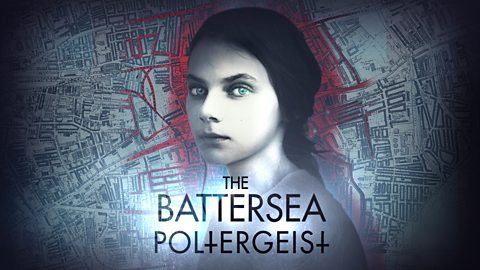
Trailer: The Battersea Poltergeist
Do you believe in ghosts? Danny Robins introduces The Battersea Poltergeist.
Battersea is pretty gentrified now, full of gastro-pubs and trendy coffee shops, but back in 1956, it was a fairly poor, working class area. Number 63 Wycliffe Road was home to the Hitchings Family. Dad Wally was in his forties, a tall, gaunt man who drove trains on the London Underground. His wife Kitty, slightly older than him, was a former office clerk, now in a wheelchair due to chronic arthritis. Their daughter Shirley was 15, about to start art school and working part-time as a seamstress at department store Selfridges. It’s Shirley that the strange activity in the house seemed to focus around, and also the media interest.
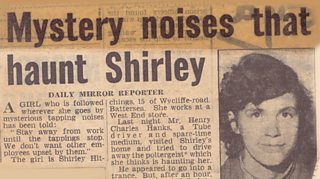
The pictures of her in newspaper articles on the case show a striking girl with dark hair and even darker eyes. The other residents of the house were Wally’s mother, Ethel, a fiery character known locally as ‘Old Mother Hitchings’ and her adopted son, John, a surveyor in his twenties who Shirley thought of as a brother. Their lives were changed forever one night when they were woken by deafening bangs reverberating through the house, shaking the walls and floors.
Less than a decade after the end of the Second World War, it recalled memories of living through the Blitz; an intense barrage of noise so loud the neighbours came round to complain, imagining that Wally was hammering or tearing up floorboards in the middle of the night. The racket could be heard out in the street. This was the beginning of a nightmare that would come to dominate the family’s lives. The next night, the same thing happened, and again the next. Soon it was a daily occurrence, not just nocturnally, but in broad daylight too. The Hitchings, sleep-deprived and terrified, called out the Police and various surveyors, but no one was able to get to the bottom of where the noises came from. The sounds flitted between that intense banging and a scratching that seemed to come from within the furniture, even from inside the bed headboard as they tried to sleep.
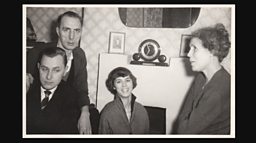
Reports of poltergeist hauntings commonly start with noises. Ciaran O’Keefe, a psychology professor from Bucks New University, who is working on my ����ý podcast series about the case, says “the argument from some parapsychology theorists, is that it's about attention. We're seeing effectively a ghost with a tantrum.” The word poltergeist is German for “noisy ghost” and they are often portrayed as being like supernatural toddlers, smashing up your house in a fit of pique.
After the noises, the next stage is almost always objects moving.
After the noises, the next stage is almost always objects moving, as if the poltergeist wants to up the stakes and really show what it can do. On this front, the Wycliffe Road case doesn’t disappoint. Evelyn Hollow, a Scottish writer and parapsychologist who also features in the series, says “we're talking about a clock floating through the air. We're talking about pots and pans being thrown from a room that nobody was in.” Multiple witnesses claimed to have seen bedsheets flying off beds, slippers walking around of their own accord and chairs moving. As time went on, these events became increasingly violent. “Rooms are trashed,” says Evelyn. “The house must have looked like a bloody warzone. It’s a truly wild case.”
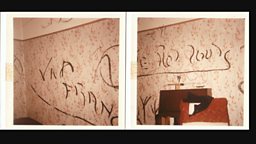
Up until this point the case resembles many other poltergeist hauntings – chilling and unsettling, but following an established pattern, However, it then takes on a truly extraordinary life of its own. Without wanting to give any spoilers, you’ll hear spontaneous fires break out, disembodied voices, writing appearing on walls and even on paper – seemingly "letters from a ghost".
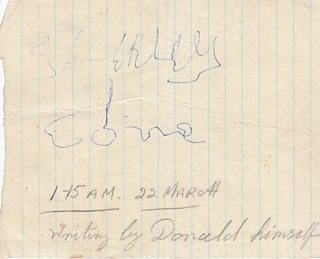
To say any more would give the game away, but there’s also a fascinating detective story aspect to the case. The Hitchings nicknamed the poltergeist "Donald" and over a period of months and years they developed a way of communicating with it, searching for clues to who or what he was, while the newspapers creepily alleged that he was obsessed with Shirley. This bizarre and thrilling story feels equally fascinating whether you believe in ghosts or not – if you do, it represents the best chance I’ve come across to prove that paranormal phenomena actually exist, and if you’re sceptically-minded it becomes an intriguing psycho-drama, trying to work out what really happened and how humans could have consciously or subconsciously created these strange, seemingly impossible events.
I became involved with the story back in 2018, while making a podcast called Haunted where I interviewed people who believed they’d had ghostly encounters. One of the contributors told me about a case he thought might interest me. A few months later I found myself chatting to Shirley Hitchings herself – she’s 80 now – and it quickly became apparent this was not going to fit into a single episode.
I became involved with the story back in 2018, while making a podcast called where I interviewed people who believed they’d had ghostly encounters. One of the contributors told me about a case he thought might interest me. A few months later I found myself chatting to Shirley Hitchings herself – she’s 80 now – and it quickly became apparent this was not going to fit into a single episode.

I devoured the book that Shirley had co-written with James Clark about her experiences, “The Poltergeist Prince of London”, and would end up devoting much of the following two years to investigating her case. My new ����ý series The Battersea Poltergeist is the result. If you asked what convinced me it had the potential to be a series, I could tell you it was the incredible story Shirley told me in our interviews, so rich, complex and full of twists and turns – like a horror movie come to life. I could tell you that, and it’d undoubtedly be true, but really, the thing that made me become obsessed with telling this story was less tangible – it was simply some quality of Shirley’s voice that sent a shiver down my spine, because listening to her I was utterly convinced she was not lying.
I lay awake for a long time that night after first chatting to her, my thoughts racing, because the idea that what she’d told me was true seemed the most frightening thing of all. The implications for my life and the way I viewed the world were huge. I hope you’ll feel that same frisson I had when you first hear Shirley’s voice in the series.
The other incredible resource we have for our investigation is a cardboard box Shirley stored in her attic for many years, full of material about the case. It contains her father’s diaries, entitled "Living With a Poltergeist", photographs and newspaper cuttings, and, most usefully of all, we have the files of the original investigator, a man named Harold Chibbett, which Shirley rescued from his house after his death.
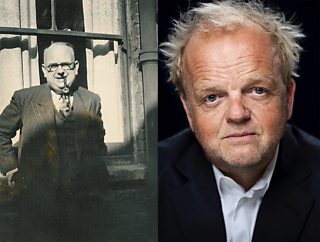
"Chib", as he liked to be known, has been largely forgotten by history – you won’t find much if you Google him – but he was a respected ghost hunter in the 1950s. Chib’s an intriguing character – a tax inspector by day who conducted paranormal investigations by night; camping out in the kitchens and living rooms of those terrifyingly ordinary houses, trying to make contact with "the other side". He’d served in the First World War and, perhaps as a result, had developed a desperate desire to prove the existence of life after death. He was incredibly well connected within the world of supernatural research. Evelyn Hollow describes him as “the Jay Gatsby of ghosts” with a circle of friends and contacts that included Sherlock Holmes creator Sir Arthur Conan Doyle, sci-fi behemoth Arthur C Clark, legendary ghost hunter Harry Price, and even the notorious black magician Aleister Crowley.
He would end up devoting the rest of his life to trying to help the Hitchings and work out who or what Donald was. Mixing Chib’s case notes with Shirley’s own recollections of events has allowed us to bring the 1956 haunting to life in our series, through dramatic reconstructions starring Dafne Keen as Shirley and Toby Jones as Chibbett, with Burn Gorman, Alice Lowe, Calvin Demba and Sorcha Cusack as the rest of the Hitchings Family. In this way we blend Chib’s original investigation with my present-day attempt to crack the mysteries of the case with the help of modern experts.
Which brings us back to Wycliffe Road, where, having traipsed up and down the street several times and even bothered a local postman, I’ve made a startling discovery. Number 63 no longer exists. I knew the original house had been demolished in the late 1960s, but I’d expected to find something in its place, a modern-day successor; instead, it’s as if the address has been erased – a fitting thing for a ghost story: a disappearing house.
“I’m pleased it’s gone,” says Shirley, “I wouldn’t ever want to go through that again.” She gives an involuntary shudder, and I feel another little shiver down my spine.
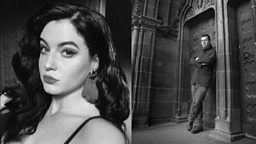

How to Create a Haunting
Danny Robins investigates how fear can play with your mind.
Are you a sceptic or a believer?
Do you have your own theories or questions on the case? Perhaps you'd like to share your own supernatural experiences? You can join in the investigation - email Danny at batterseapoltergeist@bbc.co.uk. We'll be exploring some of the emails we get during the series.
